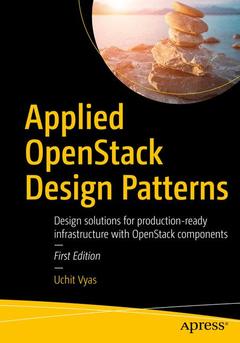Chapter Goal: In this chapter, readers will understand the different components of OpenStack and their underneath architectures. Also readers will come to know how to design and map application and its infrastructure with OpenStack Component as per design and flow. So in this chapter, readers will be able to relate their SDLC with Openstack to start with.
Sub -Topics
1. Getting familiar with OpenStack components
2. Map your application and infrastructure with OpenStack components
3. Summary
Chapter 2: Reference Architecture
Chapter Goal: In this chapter users will understand the classic and popular design implementation patterns with OpenStack. Moreover, users will see the generic implementation practices examples of OpenStack.
Sub -Topics
1. Learn widely used design patterns on OpenStack
2. Common implementation and custom patterns
3. Summary
Chapter 3: Deploying prerequisites and infrastructure services
Chapter Goal: In this chapter users will understand how to think big, start with small infrastructure and scale rapidly on the highly customizable platform. Also, users will come to know how to identify OpenStack components for implementation in the context of native applications.
Sub - Topics
1. Put down the idea, Start with Small and implement (scale) fast
2. Define components for implementation with OpenStack
3. Summary
Chapter 4: Deploying Multimode cluster
Chapter Goal: In this chapter, readers will learn the need of cluster creation of compute resources and setup. At the end, readers will understand how to add or remove resources from the cluster as per the usage pattern.
Sub - Topics:
1. Understand the cluster scenarios and requirements for native application
2. Implementation of multi-node cluster on OpenStack Components
3. Summary
Chapter 5: Designing a resource management system with OpenStack compute
Chapter Goal: In this chapter users will learn about OpenStack resource management and underneath algorithm for resource management. Also, it covers the custom designing part for the resources management.
Sub - Topics:
1. Learn OpenStack resource management
2. Compute resource management design for resources
3. Summary
Chapter 6: Design solution for virtual machine with OpenStack compute
Chapter Goal: In this chapter, users will analyze the required compute pattern and capacity of VMs with respect to native Stack availability. Here users will also study what factors need to take care for deciding sizing and allocation pattern of compute resource.
Sub - Topics:
1. Identify the usage pattern for VMs and underneath capacity allocation
2. Decide the size and allocation pattern
3. Summary
Chapter 7: SDLC in a cloud
Chapter Goal: In this chapter, users will understand the component’s consistency of OpenStack with native applications. Also, users will understand the usage of OpenStack components for SDLC of native app and underneath infrastructure. At last user will come to know the resource integration requirements and their design with OpenStack.
Sub - Topics:
1. Compatibility of OpenStack components with your App and external resources
2. Utilization of OpenStack components for SDLC
3. Integration requirements and design
4. Summary
Chapter 8: High Availability
Chapter Goal: In this chapter, users will learn the necessity of getting HA and design principles for setting up HA with respect to request allocation and access pattern of the application and infrastructure components.
Sub - Topics:
1. Design always available platform
2. Learn the load and access patterns to achieve HA
Chapter 9: Networking and OpenStack computes
Chapter Goal: In this chapter, users will learn how to plan and design networking components of hardware and virtual compliances with OpenStack. Also, users will understand how to design efficient network topology for OpenStack to create faster and efficient communication channel.
Sub - Topics:
1. Map networking components of Hardware with OpenStack
2. Design gateways and endpoints for Network topology
3. Summary
Chapter 10: Orchestration of deployment and security in OpenStack
Chapter Goal: In this chapter, users will learn the best practices for Orchestration and Automation. Moreover, users will see the security implementations on each layer for application and platform on OpenStack.
Sub - Topics:
1. Design Orchestration and deployment automation
2. Enable security and encryption at every layer of your app and platform
3. Summary
Chapter 11: Monitoring and Metering Implementation patterns
Chapter Goal: In this chapter, users will learn how to model real-time patterns for access and usage by custom monitoring implementation of components of OpenStack and native applications. Also, readers will understand the implementation designs for granular profile based access on specific endpoints of the OpenStack components.
Sub - Topics:
1. Design real-time app and component monitoring
2. Enable profile based metering
3. Summary
Chapter 12: Cloud Automation
Chapter Goal: With this chapter, Users will understand the industry best practices for cloud automation with respect to OpenStack by enabling DevOps model and Continuous Integration pipelines for native applications.
Sub - Topics:
1. Design the platform as cloud agnostic platform
2. DevOps and Automation implementation Model
3. Summary

